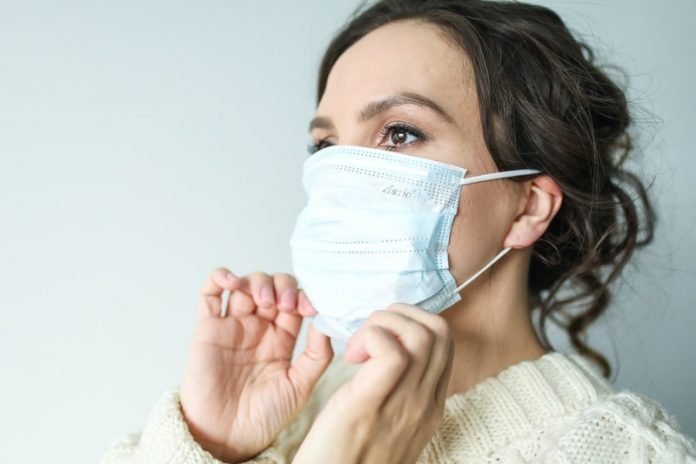
COVID-19 has strongly increased the public use of face masks to protect others from the wearer’s respiratory droplets as well as the wearer from airborne contaminants.
After each wear, however, bacteria from even a healthy wearer’s own respiratory droplets collect on the inside of a mask as well as the outside, which could contain airborne pathogens capable of living on its surface.
Although proper sanitization is imperative, many people reuse masks and other face coverings many times without sanitizing them.
That is likely because current sanitization methods can be cumbersome.
In a new study, researchers found a method to address the many pitfalls of sanitizing all types of face masks from N-95s to cloth and surgical masks.
They designed a compact and portable sanitizing device for masks and other items that can be used at home or at work.
The research was conducted by a team at Florida Atlantic University.
Most people only have access to a limited supply of masks and often don’t have the option of disposing of them after a single-use.
Those who wear cloth masks may sanitize them by washing them, but the washing and drying process is often too time-consuming to sustain washing after each wear.
Moreover, washing is not an option for those who wear medical-grade masks, and using disinfectant sprays can cause skin irritation or damage the fibers of the mask designed to catch particulates.
In the study, the “portable hanging rack device” is designed as an enclosed chamber that comes in two forms – a plastic container with a handle and a stainless steel compartment.
The hanging rack and an ultraviolet-C (UV-C) light source is placed within either of these enclosed chambers and is capable of sterilizing up to six masks simultaneously and quickly, killing bacteria, yeasts, mold spores, and viruses.
The masks are positioned vertically on the internal rack.
To prevent the UV light from harming a user’s skin and eyes, the light source is shielded within the housing enclosure.
When UV-C radiation contacts the mask, the surface of the mask is subsequently sanitized as the radiation deactivates the biological components of pathogens.
The UV-C light source delivers uninterrupted UV-C radiation to the mask surfaces and uses a UV-C bulb that produces limited ozone.
The team has tested a number of micro-organisms using this device and has shown its efficacy against pathogens including the highly-contagious E-coli, which was eradicated within the device in about one minute.
They say that when fully developed, this method will effectively sanitize masks as well as other objects such as keys and smartphones in a way that is safe, affordable, odor-free, and suitable for household use.
The team recently filed a provisional patent application for this novel invention with the United States Patent & Trademark Office.
One researcher of the study is Patrick Grant, Ph.D., an associate professor of biomedical science.
Copyright © 2020 Knowridge Science Report. All rights reserved.



